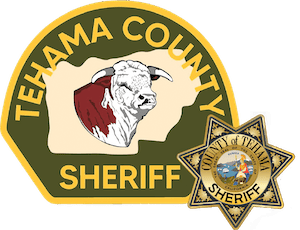Cooling Centers
The term “Cooling Center” refers to a location, typically an air-conditioned or cooled building, that has been designated as a site to provide respite and safety during extreme heat.
The County of Tehama has set temperature thresholds that, once met, allow for the operation of a Cooling Center. Once daytime temperatures reach or exceed 106F AND nighttime temperatures remain above 80F for TWO (2) consecutive days the County’s Office of Emergency Services can activate a Cooling Center. If a PSPS event occurs during extreme heat there may be exceptions to these thresholds to offer a place to go during a power outage for those who may not have an alternative power source.
The Tehama County Sheriff’s Office closely monitors our extreme weather and will notify the public when Cooling Centers will be activated and operational. The location and hours of availability will be released to the public upon activation.
Cooling Zones
When there is not an official Cooling Center open there are “Cooling Zones” available throughout the County that offer a place for the public to go to escape the heat during normal hours of operation. These sites do not provide food or water but they do offer a place for your body to cool down. These include, but are not limited to; public libraries and the Red Bluff Community Center.
Hazard Mitigation
The term “hazard mitigation” refers to actions or strategies that can reduce or eliminate long term risks caused by natural disasters.
The County of Tehama has developed a hazard mitigation plan which provides an explanation of prevalent hazards within the County and how hazards may affect population and property differently across the County. The plan also contains information on natural hazard threats within Tehama County which identifies risks to vulnerable assets (people and property). Most importantly the mitigation strategy
presented in this plan responds to the particular vulnerabilities and provides prescriptions or actions to achieve the greatest reduction of vulnerability, which results in saved lives, reduced injuries, reduced property damage, and protection for the environment in the event of a natural hazard.
To view the County’s Hazard Mitigation Plan, just click on the links below:
Tehama County HMP-2017-MJHMP-VOLUME 1
Tehama County HMP-2017-MJHMP-VOLUME 2
Household Water Supply Shortage System
The State of California posts Drought Emergency Information on its website, and provides a place for those individuals (who are not on a public water system), to report problems with their water supply.
The information that is collected through their website enables them to be better informed about how the drought is impacting household water supplies. Ask part of the government’s emergency response efforts to the drought, they gather information related to private wells and their water availability.
Water Conservation Tips for Tehama County
We’ve been having a drought for several years now and encourage everyone to help with water conservation. There are little things you can do that add up to save a lot of water. By limiting your showers to the amount that a 5 gallon bucket would hold is one way to save water.
Also you can turn off the water while brushing your teeth, or don’t run the dishwasher until it’s completely full. If you need to water outside, only do it during the cooler parts of the morning or evening.
We have compiled some PDF’s for you to read more about how to save water and other information that is useful.
10 Ways to Conserve Water
Not sure if your Toilet is Leaking?
Water Conservation Toolkit
Water Conservation Toolkit – Spanish
